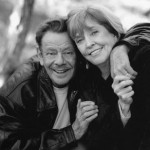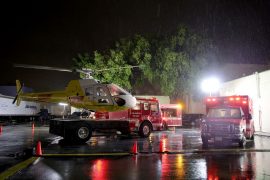 Brendan Fraser is a funny man.
Brendan Fraser is a funny man.
I spoke with him last week at his home near New York. The call was about “Texas Rising,” the 10-hour historical miniseries premiering Monday night on Global and History.
I caught Fraser right in the middle of what he described as “a dramatic moment. The world’s biggest wasp just flew in here.”
There was yelping and thrashing at the other end of the phone. it sounded feistier than the Blackhawks-Ducks series.
“This thing has landing gear on its feet,” said Fraser. “No kidding, this thing is prehistoric. This thing probably had to get clearance from the tower.”
Eventually the 6-foot-3 actor calmed down. How big was this wasp, I asked.
advertisement
“Do you want that in metric—I would say one metric thumb joint—it’s like a large humming bird.”
Fraser knows the metric system. He was born in Indiana but raised in Ontario, attending Upper Canada College as a lad.
Fraser, best known for the “Mummy” series of films, spent three-and-a-half months on Darango, Mexico, shooting “Texas Rising” with Bill Paxton, Ray Liotta, Rob Morrow, Kris Kristofferson and many others. He describes the vistas there as “some of the most achingly beautiful terrain.” Many westerns were shot there, and Fraser, who gets wordy when he’s on a roll, says it looks like “the saturated genre of the western on our collective cinema zeitgeist ideology.”
The 46-year-old actor says it was fun playing, as he would have called it when he was a kid, cowboys and Indians. “When you’re able to immerse yourself in that environment and the resources supported to create the environment, there’s no bold-faced-italics-underlined “acting” involved or needed. You show up. We really had to fight for our time in a way. It’s a very large cast and we were an ensemble, we had to work together to get all nine, seven whatever of us all in the same frame locked off in this nice wide cinema-scope-like format. Get on your horses, get your mug in the shot.”
Fraser credits director Roland Joffe (“The Killing Fields,” “The Mission”) with the overall vision for the miniseries. “He’s not one to shy away from enormous themes, such as looking at nations as individuals, as people.”
“Texas Rising” is set in the 1830s, beginning with the slaughter at The Alamo which led to the rise of the Texas Rangers. “The United States, really, how united was it at the time?” asks Fraser, who did his share of research into the period. “It was trying to expand, it was going through growing pains, it was adolescent, it was wanting, it was kind of grabby. It was cranky, it was acting out, it was saying no it’s mine, get out or its my ball and I’m going home. It didn’t care if there were locals who were there already. Namely the Comanche tribes—they were perfectly happy the way they were.”
For more on Fraser and “Texas Rising”–including a sweet story about what he did after the shoot with the horse he rode during the production–follow this link to a story I wrote for The Canadian Press.





